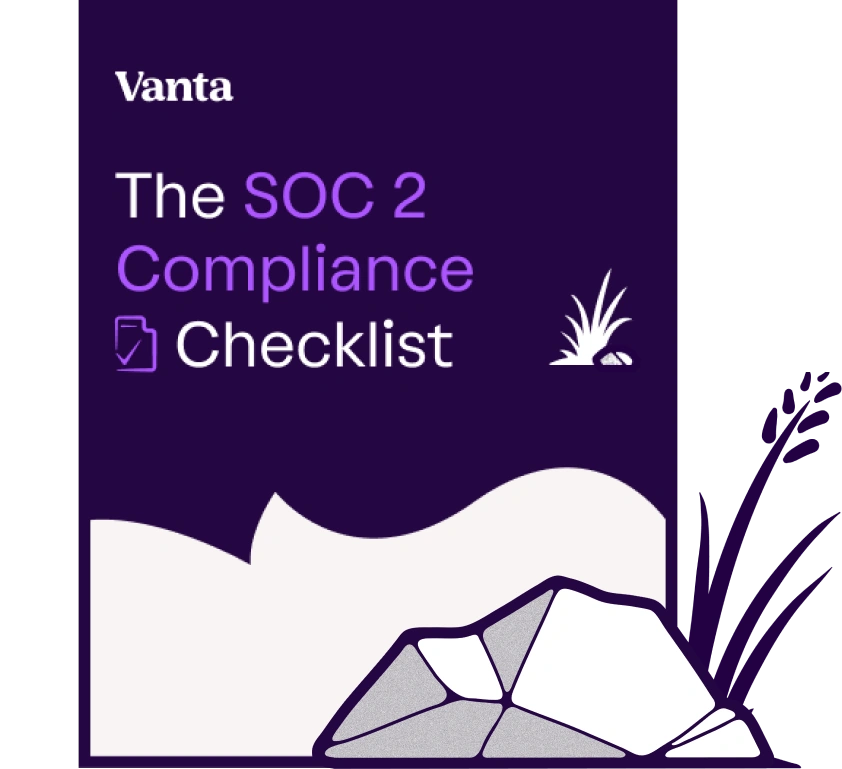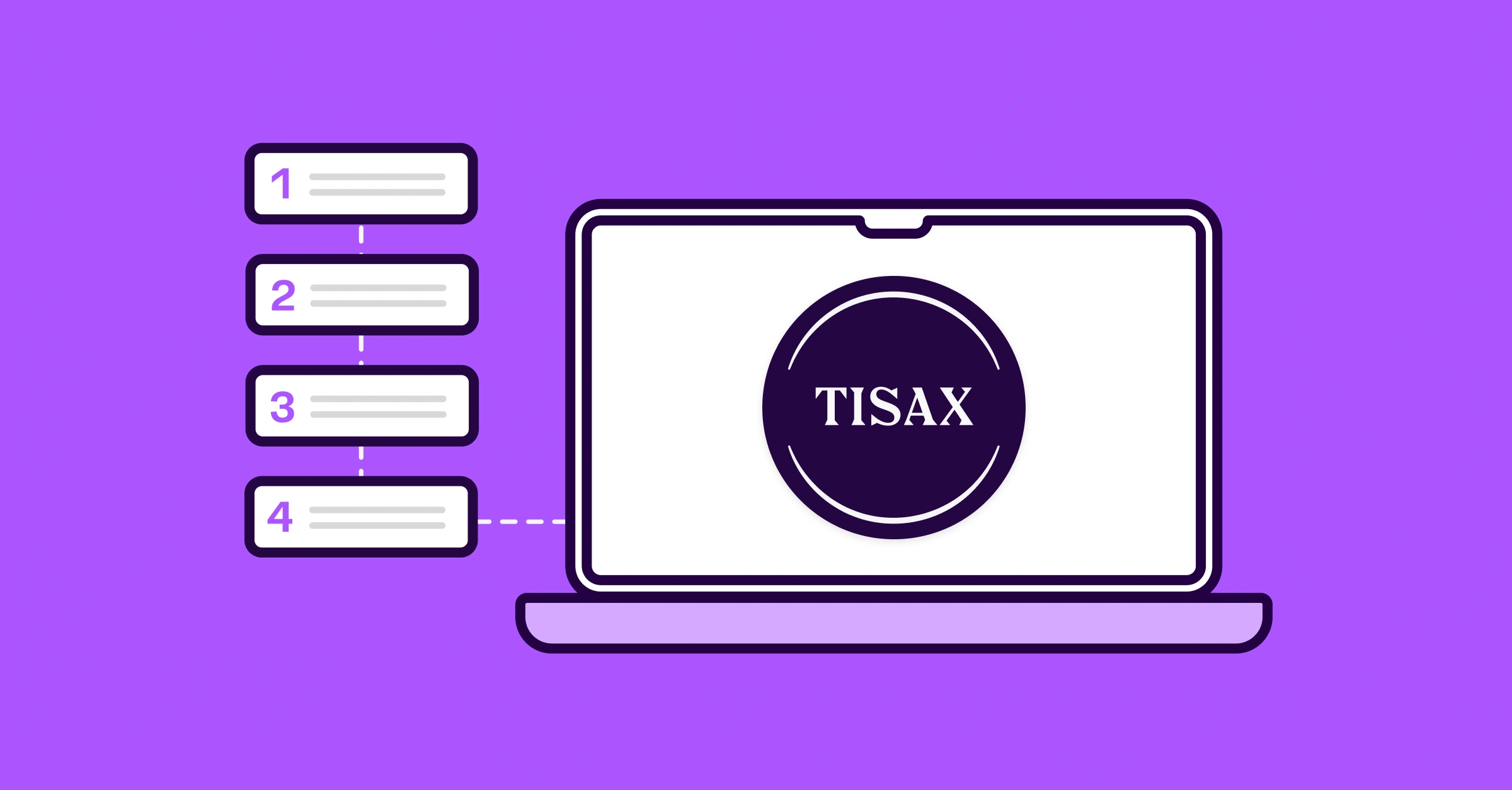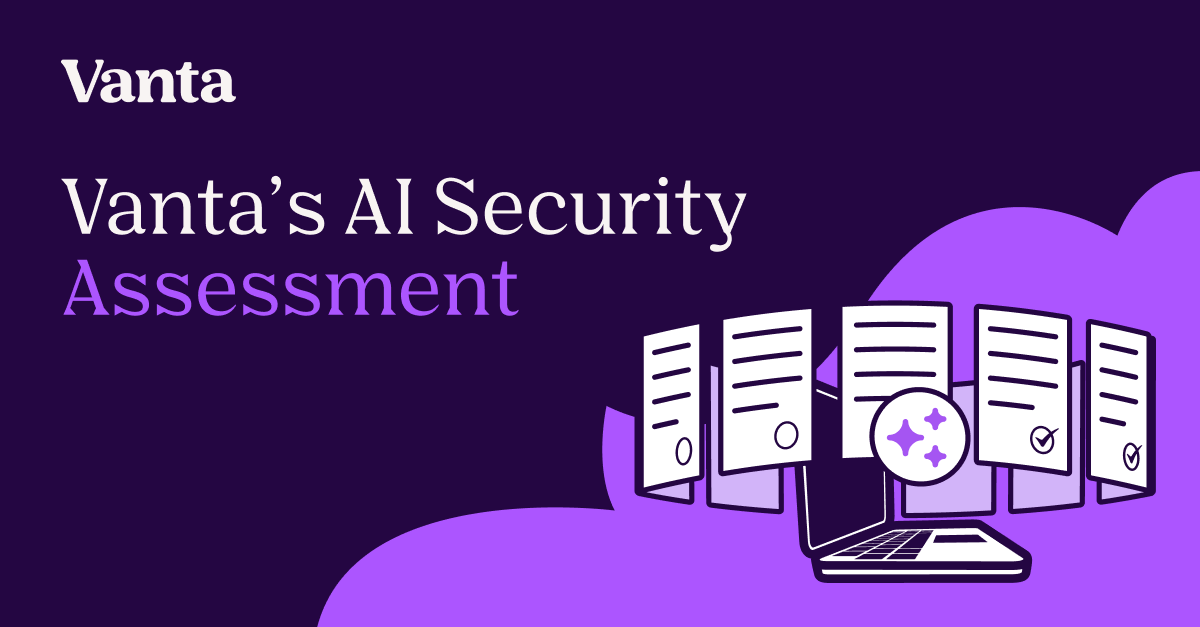Share this article
.png)
How to demonstrate your AI security posture: A step-by-step guide
Accelerating security solutions for small businesses Tagore offers strategic services to small businesses. | A partnership that can scale Tagore prioritized finding a managed compliance partner with an established product, dedicated support team, and rapid release rate. | Standing out from competitors Tagore's partnership with Vanta enhances its strategic focus and deepens client value, creating differentiation in a competitive market. |
As organizations integrate AI into their everyday systems and operations, the scrutiny on the risks it introduces is higher than ever. According to Vanta’s State of Trust Report 2024, more than half of organizations express concerns over security risks compounded by AI.
The growing unease highlights a new business expectation: you must be able to prove your organization is using AI securely and responsibly. Having a demonstrable AI security posture can translate into better trust with stakeholders, but how do you get started?
This guide will walk you through what an AI security posture entails and the six steps to demonstrate it effectively.
What an AI security posture entails and how it extends your cybersecurity posture
An AI security posture is the overall strength and maturity of an organization's ability to defend AI systems from internal and external threats. These threats apply regardless of how you adopt AI—whether you’re developing models in-house or consuming third-party services. An AI security posture entails demonstrable components, such as policies, oversight practices, and documentation, that safeguard an organization’s AI-influenced systems, data, and outcomes.
While a more traditional cybersecurity approach primarily focuses on information assets and infrastructure risks, AI security extends this to account for unique risks, such as data poisoning, output bias, and accountability over AI-driven decisions. Today, many organizations mitigate these new security and governance gaps through AI security posture management (AI SPM), a strategic approach to managing AI systems through stricter monitoring practices. It’s based on two components:
- Governance-level protections: Establishing a framework that assigns clear stakeholder roles and defines policies and procedures for overseeing AI security
- Technical safeguards: Implementing access controls, monitoring AI systems for anomalous behaviors, ensuring the confidentiality and integrity of training data, and other best practices
Why demonstrating your AI security posture matters
Building and demonstrating a robust AI security posture is about creating strategic advantages for your organization, such as:
- Building trust with customers and partners: AI is still an evolving technology carrying distinct risks and uncertainties. Showing your commitment to safeguarding AI-impacted data and processes directly strengthens trust with customers and prospects—giving you a clear competitive edge.
- Proactive regulatory alignment: The AI compliance landscape is still maturing. For instance, the EU AI Act introduces binding obligations for in-scope organizations based on their risk tiers, and while HIPAA may not have rules specific to AI, regulators are paying close attention. Some industries may also expect compliance with voluntary AI standards such as ISO 42001. By implementing AI safeguards early, you position your organization to adapt and align smoothly with newer regulatory expectations.
- Defined internal accountability standards: Clear governance policies, procedures, and technical guardrails enable your team to focus on addressing AI-informed security gaps and threats quickly.
- Revenue impact: Calculating ROI on AI security investment can be tricky, but it does impact the bottom line. Easily demonstrable internal policies and safeguards make it easier to complete security reviews and accelerate deal cycles, while also reducing the likelihood of costly breaches.
{{cta_withimage28="/cta-blocks"}}
6 steps for demonstrating your AI security posture
Follow these six steps to efficiently demonstrate your organization’s AI security posture:
- Establish strong data security practices from the ground up
- Align with leading compliance and security frameworks
- Conduct regular risk assessments
- Assess third-party AI risk before it becomes yours
- Maintain audit-friendly documentation
- Continuously monitor your AI systems
Step 1: Establish strong data security practices from the ground up
Demonstrating your AI security posture begins with securing your data. Although AI offers tremendous value today, it also introduces risks—such as data leakage and unauthorized access—that can raise data privacy concerns among customers and partners. To address these risks and build trust, establish foundational data security practices, such as:
- Encryption: Safeguarding datasets, both during storage and transfer
- Access control: Map access policies to relevant frameworks, such as SOC 2, HIPAA, or the GDPR, depending on your industry and geography
- Adversarial training: Introduce humans in the loop to strengthen models against malicious input that could impact performance and reliability
- Privacy-preserving techniques: Use methods like differential privacy, data minimization, and pseudonymization to protect individual privacy
While the above safeguards are designed to support AI development, many also apply when using third-party AI services. Finally, you may want to leverage integrations and GRC tools to continuously monitor who has access to sensitive data, prompts, and deployed models.
Step 2: Align with leading compliance and security frameworks
One of the most credible ways to approach AI security is by aligning with international standards and frameworks such as ISO 42001 and NIST AI RMF. Aligning with such established sources demonstrates that your organization takes security seriously and helps teams respond to new regulations proactively at any scale.
The AI compliance space is still developing, and according to Vanta’s 2025 AI governance survey, over 50% of organizations already struggle to keep up with the rapid changes. The following are some established frameworks that provide organizations with baseline guidance for navigating regulatory shifts:
- NIST AI RMF
- ISO 42001
- GDPR
- EU AI Act
Currently, ISO 42001 is the only framework on this list that offers certification. The EU AI Act is expected to begin enforcement in August 2026, which should help establish transparent benchmarks for AI security accountability.
{{cta_webinar6="/cta-blocks"}}
Step 3: Conduct regular risk assessments
Conducting frequent AI security risk assessments is an essential step for ensuring your organization’s AI tools and processes continuously meet security criteria. You can perform the evaluation either by developing your own assessment questions or using a template, such as Vanta’s AI Security Assessment Template, which standardizes your approach to identifying gaps and reducing exposure to emerging threats.
Your assessment should cover questions about governance, risk, and compliance, such as:
- Transparency, explainability, bias, and fairness:
- Do all high-risk models have built-in interpretability features?
- Is technical documentation maintained for all in-house AI models?
- Testing, monitoring, and performance management:
- Are AI-enabled tools monitored for performance and accuracy issues?
- Are AI systems continuously monitored for model drift and performance degradation?
- Security controls and operations:
- Is the AI system security integrated with your organization's overall cybersecurity program?
- Are AI systems designed with appropriate logging to enable auditability of decisions?
- Enterprise risk management and compliance:
- Do vendor contracts include terms for AI security, privacy, and compliance?
- Are human rights impact assessments conducted for high-risk AI applications?
You can further tailor the questions to your industry. For instance, in banking, risk reviews may include AI model risk management and AI stress testing for financial institutions to ensure all AI-driven decisions meet stringent oversight standards. Similarly, healthcare organizations can integrate healthcare-focused AI risk management practices to assess fairness, explainability, and bias in clinical decision support systems.
For better accountability, you can publish the results of your risk assessment on a public Trust Center so that independent parties like customers and partners can review your practices seamlessly. You can also showcase other security artifacts, such as policies and controls, to attest to your approach to AI security. From a procedural perspective, a Trust Center can help speed up security reviews with new buyers.
Step 4: Assess third-party AI risk before it becomes yours
Your risk assessments should also encompass your vendors and service providers. Many SaaS and AI-first organizations integrate third-party models, APIs, and datasets into their systems, which can introduce additional vulnerabilities beyond your organization’s direct control. Even if you strengthen internal safeguards, gaps in your third-party security posture can still lead to compliance violations.
You may have specific requirements to align with depending on your industry. For example, in healthcare, you may choose to only procure HIPAA compliant AI tools.
Perform detailed risk assessments to ensure that vendors and suppliers meet your organization’s compliance, privacy, and security standards. Key aspects to review include:
- Data handling and privacy practices
- Third-party access controls
- AI model integrity and monitoring
- Incident response protocols
Tools like security questionnaires can help gather clear responses from third parties. These assessments should happen during onboarding and be repeated at regular intervals to support ongoing risk management.
Step 5: Maintain audit-friendly documentation
Maintaining thorough documentation is one of the most effective ways to demonstrate the strength of your security posture to auditors, regulators, and external partners. If you’re developing AI systems, records specific to areas like behavior training and processing steps can help illustrate how your model is managed. Examples include:
- Training data logs
- Access logs
- Update notes and version histories
- Retraining events and drift corrections
- Adversarial input testing
- Fairness assessment
A thorough trail of documentation can help you respond quickly to auditor queries, regulatory inquiries, and partner due diligence. It also facilitates targeted corrective actions as you have documented data to pinpoint the root cause of a misstep.
Step 6: Continuously monitor your AI systems
According to Vanta’s Trust Maturity Report, continuous monitoring is one of the key factors that help organizations mature their security programs. For AI systems, that means extracting near real-time insights into unusual behaviors, data inconsistencies, and AI hallucinations.
In most cases, AI drift and degradation can be traced back to outdated training data. Other times, inaccurate predictions or anomalous judgments can be attributed to harmful prompt injections, poor retraining, data corruption, or even misconfigurations. Continuous monitoring helps identify the root causes early and remediate them before they turn into bigger security or performance issues.
Additionally, many relevant AI frameworks and regulations, such as ISO 42001 and the GDPR, require that you implement ongoing monitoring processes as part of your compliance efforts.
Using automated monitoring tools helps you actively monitor your AI systems without overburdening security teams. These tools not only make oversight efficient but also produce auditable logs as demonstrable evidence.
{{cta_withimage28="/cta-blocks"}}
Demonstrate AI security efficiently with Vanta
Vanta is a compliance and trust management platform that offers organizations the fastest way to demonstrate responsible AI practices and build trust. The solution can help you achieve compliance with leading AI frameworks and standards such as ISO 42001, EU AI Act, and NIST AI RMF.
You get prescriptive expert guidance tailored to how organizations use AI. Use Vanta’s dedicated AI compliance product with features, such as:
- Pre-built policy templates and control sets
- Automated evidence collection powered by 375+ integrations
- A unified tracking dashboard for control monitoring
- Access to public-facing Trust Centers
- Questionnaire Automation that saves significant time on vendor reviews
- Streamlined risk assessments with Vanta’s AI Security Assessment
Organizations with ISO 27001, SOC 2, or other frameworks often already meet many AI-related requirements. Vanta’s cross-mapping feature helps surface overlapping evidence and controls to reduce redundant effort.
Schedule a custom demo to explore how Vanta can support your AI security posture.
{{cta_simple34="/cta-blocks"}}





FEATURED VANTA RESOURCE
The ultimate guide to scaling your compliance program
Learn how to scale, manage, and optimize alongside your business goals.
%201%20(1).svg)













.webp)

.png)






.png)






.svg)
.svg)
.png)
.png)
.png)